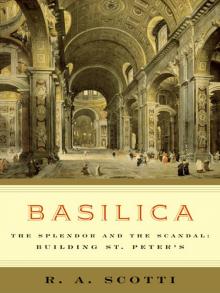R. A. Scotti 

by Basilica: The Splendor;the Scandal: Building St. Peter's
Genre: Other10
Published: 2007
View: 711
Read OnlineRead R. A. Scotti Storyline:
From Publishers WeeklyIn this absorbing story of the construction of the Basilica of St. Peter in Rome—the grandest architectural undertaking of the High Renaissance—Scotti (Sudden Sea: The Great Hurricane of 1938) shows how the construction fed the ambitions of 30 popes, including the indomitable Julius II, who laid the first stone in 1506; Leo X, the Medici pope whose extravagant spending fueled the resentment toward the papacy that culminated in the Protestant Reformation; Clement VII, on whose watch Rome was sacked by Emperor Charles V; and Sixtus V, who restored the ravaged city and pushed, against all odds, to have the great dome completed during his lifetime. In 1506, the great architect Donato Bramante envisioned a gigantic central crossing topped by a dome of such daring design that many believed it could not be built. Throughout the 100 years of construction, numerous architects, most of them consumed with pride, lofty ambition and professional jealousy, followed. Among them were Raphael, who died at age 37; Michelangelo, who accepted the job reluctantly at the age of 71; and Giacomo della Porta, who, in 1590, succeeded in raising the grand cupola. All are brought to life in this fascinating tale of genius, power and money. B&w photos not seen by PW. (June) Copyright © Reed Business Information, a division of Reed Elsevier Inc. All rights reserved. From BooklistJust half a millennium ago, Pope Julius II laid the cornerstone for a new basilica of St. Peter. This event not only set to work an extraordinary group of architects and artists but it also led directly to revolution in Western civilization. The pope's need to finance the ambitious project ignited northern Europe's Reformation. In this engaging if uncritical history, Scotti is much less interested in the larger effect of the church's construction than in how successive artists shaped and reshaped the building, how new popes confronted the legacies of their predecessors and left their own imprints on the basilica. Bramante, Michelangelo, and Bernini had major control over one or another aspect of the vast, century-long project, and the building well illustrates the passage from a pure Renaissance aesthetic to the florid, excessive decorative impulses of the baroque. Scotti's recounting of the popular reaction to the destruction of the ancient Constantinian basilica that antedated the present building offers insight into the clash between ancient tradition and contemporary artistic expression. Mark KnoblauchCopyright © American Library Association. All rights reservedPages of R. A. Scotti :